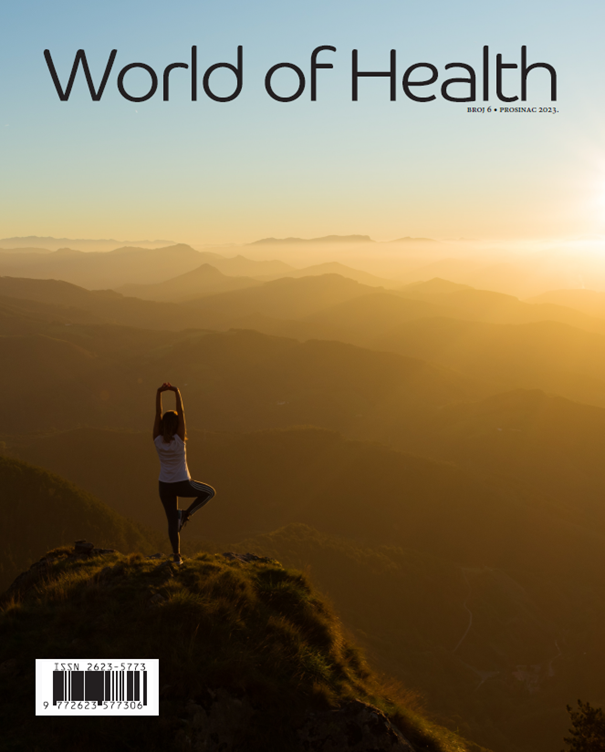Perception of professional stress of employees of the Unified Emergency Hospital Admission of the Clinical Hospital Centre Rijeka
Keywords:
Employees, Emergency Departments, Professional StressAbstract
Summary
INTRODUCTION: Nurses-technicians at ED are exposed to various hazards and stressful situations daily; witness seriously ill patients, trauma and death, experience conflict situations with patients, escorts and other health professionals, face shortages of staff and means of work, overtime and other factors that affect increased stress levels.
RESEARCH GOAL: The aim of the study was to investigate the level of perceived professional stress among ED employees of CHC Rijeka, and the influence of length of service and type of occupation on perceived stress.
RESPONDENTS AND METHODS: The survey was conducted on a commemorative sample of 50 respondents, ED employees of CHC Rijeka, during June 2023 through an anonymous online survey. Validated "Questionnaire on stressors in the workplace of hospital health professionals" dr. sc. Milan Milošević from 2009.
RESULTS: A total of 50 respondents participated in the survey, M 40%, and F 60%. The largest number of respondents is aged 20-29 years. The most common occupation of respondents is nurse/technician (76%). It has been proven that ED employees are exposed to a high level of stress, but only at a factor related to work organization and finances. Employees with a work experience >5 years have a higher level of stress than those with seniority <5 years, while the occupation has no effect on the perceived level of stress.
CONCLUSION: The leading factor that leads to professional stress among ED employees of CHC Rijeka, especially nurse/technician, is "Workplace organization and financial issues".
References
Richardson KM, Rothstein HR. Effects of Occupational Stress Management Intervention Programs: A Meta-Analysis. J Occup Health Psychol. 2008;13(1):69–93.
Atkinson W. Stress: risk management’s most serious challenge? Risk Manag. 2004;51(6):20.
Bonzini M, Bertu’ L, Veronesi G, Conti M, Coggon D, Ferrario MM. Is musculoskeletal pain a consequence or a cause of occupational stress? A longitudinal study. Int Arch Occup Environ Health. 2015;88(5):607–12.
Sarafis P, Rousaki E, Tsounis A, Malliarou M, Lahana L, Bamidis P, i ostali. The impact of occupational stress on nurses’ caring behaviors and their health related quality of life. BMC Nurs. 2016;15(1):1–9.
Norouzi N, Imani B. Clinical Education Stressors in Operating Room Students: A Qualitative Study. Investig y Educ en Enferm. 2021;39(1):2216–0280.
Glazer S, Gyurak A. Sources of occupational stress among nurses in five countries. Int J Intercult Relations. 2008;32(1):49–66.
Kivimäki M, Kawachi I. Work Stress as a Risk Factor for Cardiovascular Disease. Curr Cardiol Rep. 2015;17(9):1–9.
Miletić Ljubičić A. Zastupljenost 1. I 2. Trijažne kategorije u Objedinjenom hitnom bolničkom prijemu u Kliničkom bolničkom centru Rijeka [Internet]. Sveučilište u Rijeci. Fakultet zdravstvenih studija u Rijeci. Katedra za zdravstvenu njegu.; 2020 [citirano 02. studeni 2022.]. str. 12–3. Dostupno na: https://urn.nsk.hr/urn:nbn:hr:184:499047
Milošević M, Golubić R, Mustajbegović J, Knežević B, Juras K, Bubaš M. Validacija upitnika o stresorima na radnom mjestu bolničkih zdravstvenih djelatnika. Sigurnost. 2009;51(2):75–84.
Casale CE, Yamazaki EM, Brieva TE, Antler CA, Goel N. Raw scores on subjective sleepiness, fatigue, and vigor metrics consistently define resilience and vulnerability to sleep loss. Sleep. 2022;45(1).
Gillberg M, Kecklund G, Akerstedt T. Relations between performance and subjective ratings of sleepiness during a night awake. Sleep. 1994;17(3):236–41.
Howard S. Fatigue and the practice of medicine. Anes Patient Saf Found Newsl. 2005;20(1):1–4.
Dawson D, Reid K. Fatigue, alcohol and performance impairment. Nature. srpanj 1997;388(6639):235–235.
Rosekind MR, Gander PH, Connell LJ, Co EL. Crew Factors in Flight Operations X : Alertness Management in Flight Operations Education Module. Nasa. 2001;(11).
Howard SK, Gaba DM, Smith BE, Weinger MB, Herndon C, Keshavacharya S, i ostali. Simulation study of rested versus sleep-deprived anesthesiologists. Anesthesiology. 2003;98(6):1345–55.
Institute of Medicine, Board on Health Care Services, Committee on the Work Environment for Nurses and Patient Safety. Keeping patients safe: Transforming the work environment of nurses. Page A, urednik. National Academies Press; 2004. 23 str.
NIOSH. Healthcare Workers: Work Stress & Mental Health [Internet]. CDC. 2022 [citirano 28. lipanj 2023.]. Dostupno na: https://www.cdc.gov/niosh/topics/healthcare/workstress.html
Semlali S, Hassi A. Work–life balance: how can we help women IT professionals in Morocco? J Glob Responsib. 2016;7(2):210–25.
Downloads
Published
Issue
Section
Categories
License
Copyright (c) 2023 World of Health

This work is licensed under a Creative Commons Attribution-NonCommercial 4.0 International License.
Časopis je u otvorenom pristupu te je distribuiran pod uvjetima Creative Commons (CC BY-NC 4.0 DEED) licencije, koja dopušta neograničenu upotrebu, distribuciju i reprodukciju u bilo kojem mediju u isključivo nekomercijalne svrhe, pod uvjetom da se citira izvor.
This is an open access journal distributed under the terms of the Creative Commons Attribution License (CC BY-NC 4.0 DEED), which permits unrestricted use, distribution, and reproduction in any medium or format for noncommercial purposes only, and only so long as attribution is given to the creator.

